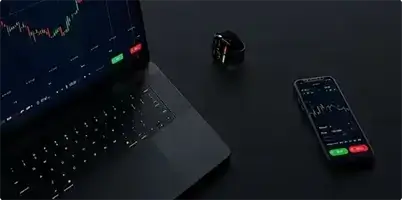
Darren Krett
Monday, 19 December 2022
M-N
0
Comments (0)
Darren Krett
Thursday, 9 February 2023
Share on:

Post views: 6483
Categories
General
INTRODUCTION TO OPTIONS
LESSON 1
Options are derivative instruments. The word derivative simply means that the value of the instrument and its characteristics are contingent upon the This and the volatility of that underlying asset that the option is written on.
underlying security are what give options value. The great advantage of options is their versatility. They can be used to accomplish a wide variety of investment strategies. Because of this, anyone that has a sound understanding of when and how to use options has a strong advantage over others.
The underlying asset on which the option is traded can be any of a broad range of securities, but our discussions and examples will be based on futures options. However, the concepts and theories that we are about to cover also apply to options on other kinds of assets.
WHAT IS AN OPTIONS CONTRACT?
An option is a financial instrument that derives its value and trading characteristics from the underlying asset.
If you bought an options contract, you would have the right, but not the obligation to buy or sell the underlying asset at a fixed price on or before a certain date, depending on the type of option bought. The seller of an option has the obligation to fulfill the requirements of the option if the buyer chooses to exercise it.
FUTURES OPTIONS
If the underlying asset is a futures contract, it is called an option on futures. A future is an agreement to execute a transaction at some time in the future. (The value of the future itself is calculated based off of the cash underlying price plus the cost of carry or financing costs to hold that product for a determined period of time, minus any benefits derived from holding that asset i.e. dividends received when holding stocks.) The value of the option on the future is then calculated off the final value derived of the future contract.
EQUITY OPTIONS
If the underlying asset is stock, you would have a stock option. The value of a stock option is calculated off of the current price of the underlying stock and each option controls 100 shares of stock.
OPTION CHARACTERISTICS
• Options provide asymmetric exposure to the underlying asset.
• Options are wasting assets.
• Option pricing depends on volatility.
• Option fair values can only be estimated.
• Implied and realized volatilities may differ.
• Option values change with futures price changes (measured by 'delta").
• Options can provide leveraged or fractional participation in futures price changes.
• Options may be: • Exercised at any time before expiration to obtain the underlying asset (in • the case of an American style option).
• Offset by an opposing market transaction.
• Allowed to just expire.
WHY OPTIONS?
Options limit risk An option gives the holder a risk-limiting position in the underlying. Because they limit risk, they provide symmetric payoffs that can be used to reshape the profit/loss profile of a position. Option premiums and volatility
a. The single most important difference between an option and an underlying is that the option's price depends, to a great extent, on how volatile the market thinks the underlying price will be over the remaining life of the option.
b. The more volatile the market expects the underlying price to be, the higher the option's price (and vice versa). Just like an insurance policy, the greater the perceived risk that the issuer takes, the greater the premium he will charge.
c. Any increase or decrease in the market's volatility forecast translates directly into an increase or decrease in an option price's extrinsic value.
d. If the market proves to be either more or less volatile than the market expected, the long option trade or hedge will perform better (more volatility) or worse (less volatility) than the underlying trade or hedge.
e. Options allow you to trade not just the direction of the market, but its implied volatility as well.

Darren Krett
Monday, 19 December 2022
0
Comments (0)

Darren Krett
Tuesday, 31 January 2023
0
Comments (0)